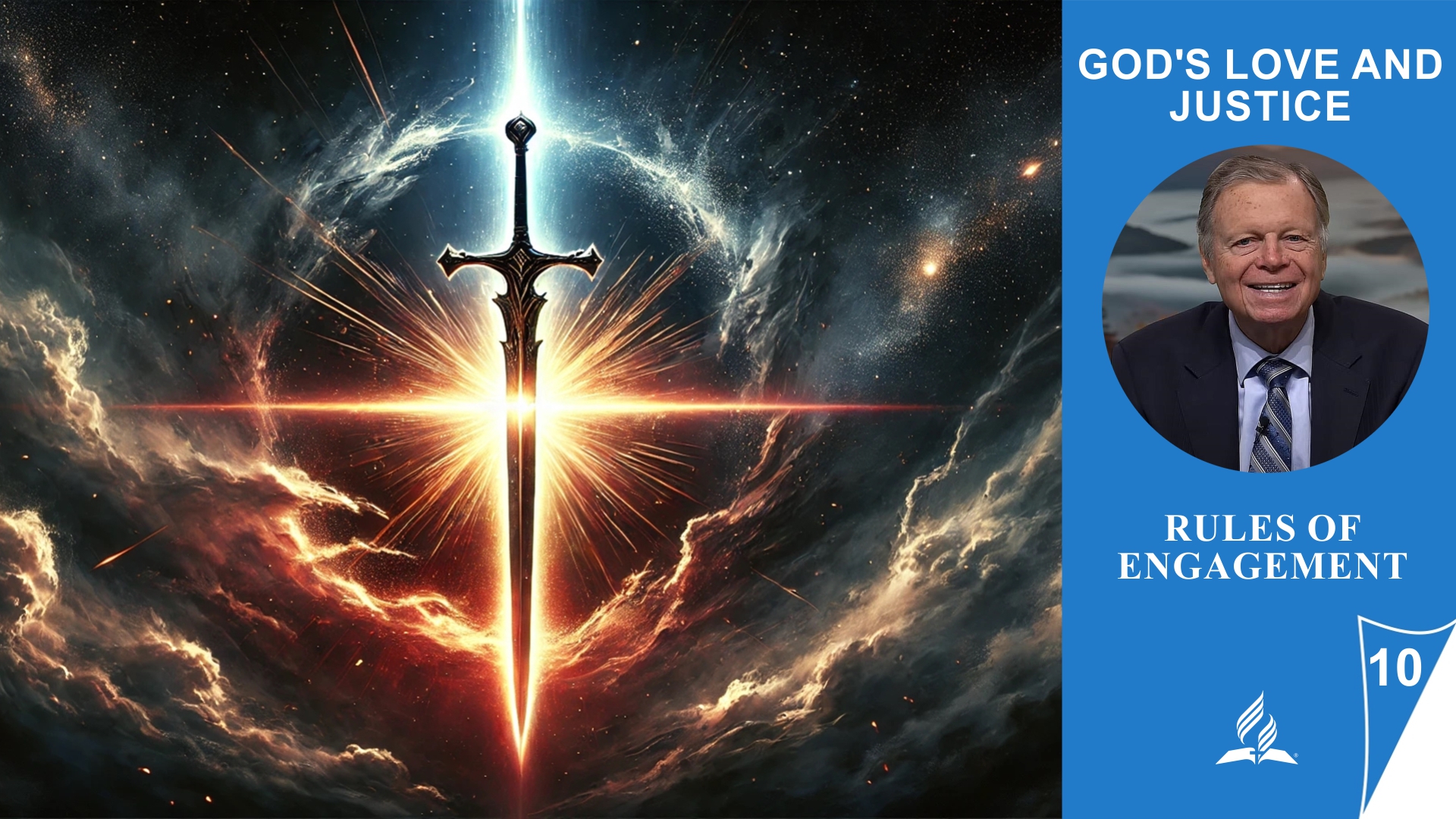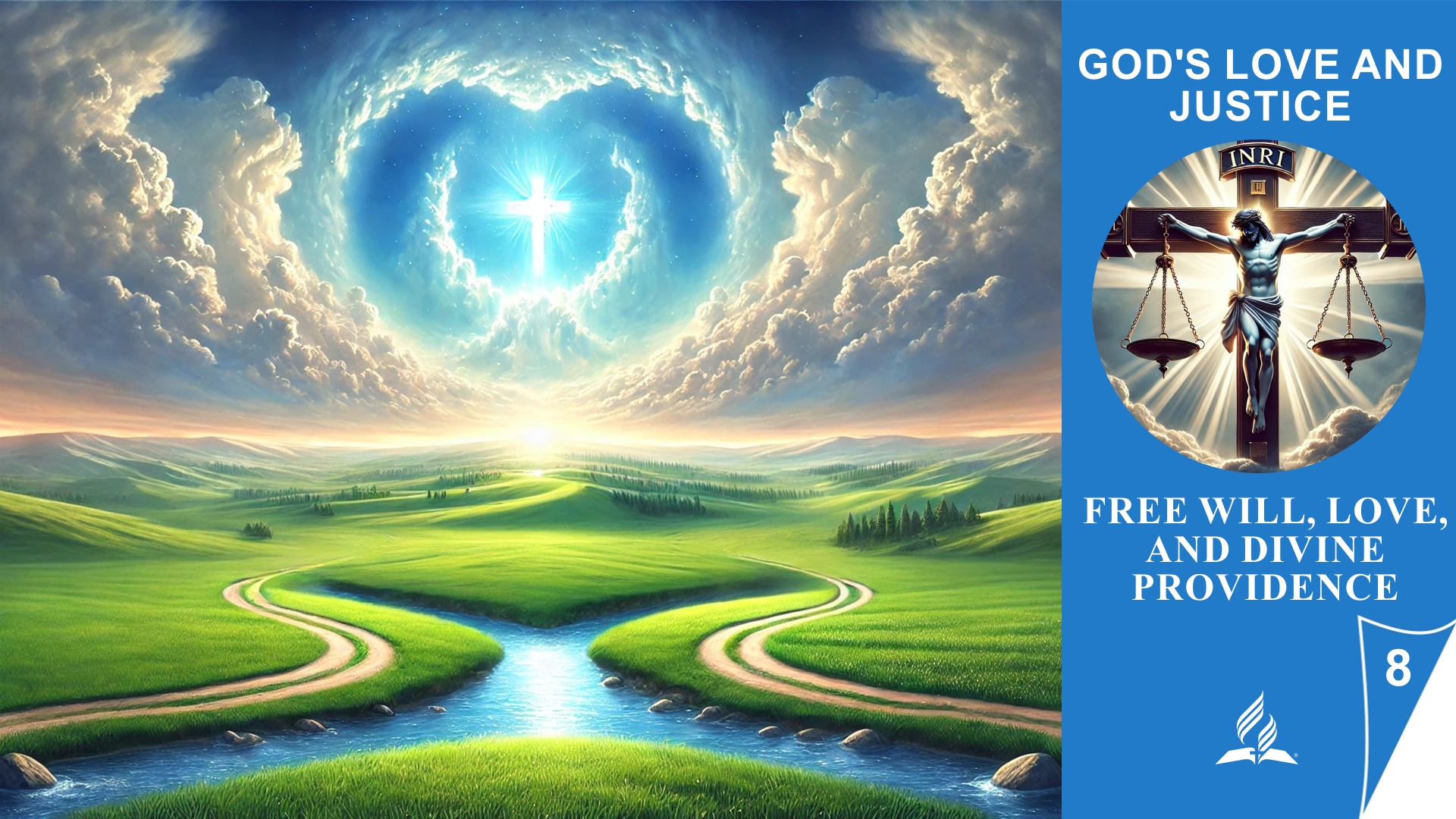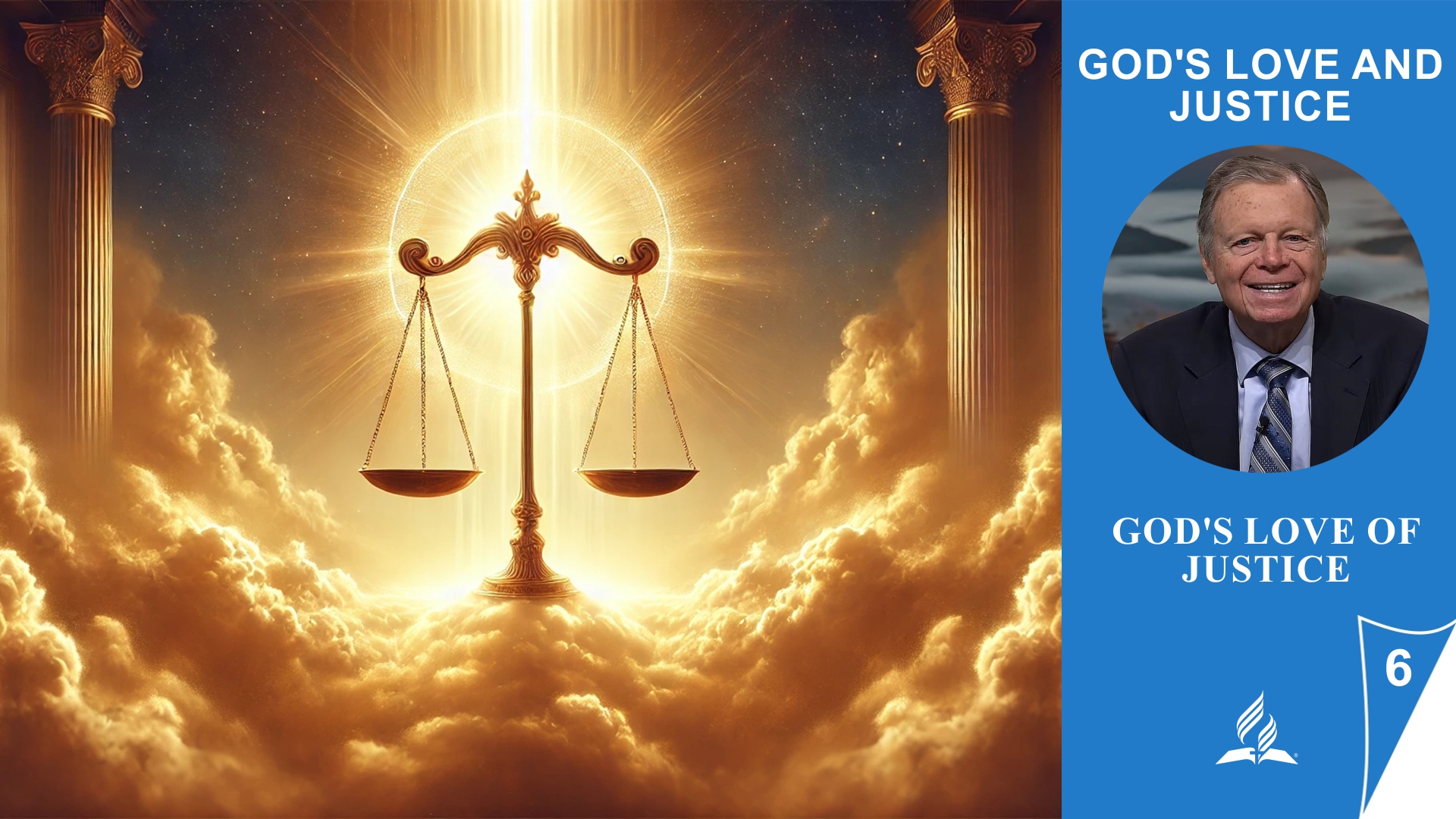
Series THE GOD OF LOVE AND JUSTICE with Pastor Mark Finley |
Lesson 10.Rules of Engagement |
God’s Rules of the Game in the Cosmic Conflict |
The great battle between good and evil is not a chaotic power struggle but follows certain rules that reflect God’s justice and love. God does not force anyone to worship Him; rather, He always acts in harmony with His principles. Even angels and heavenly powers are subject to these established boundaries, as clearly shown in Daniel 10 and Job. Satan is temporarily granted power, but it is not unlimited—God’s plan ultimately leads to the triumph of good. Faith and prayer play a crucial role, enabling divine intervention without violating the rules of the conflict. This lesson helps us better understand God’s actions within the tension between love, freedom, and justice.
Memory Text: 1.John 3,8 – “He who sins is of the devil, for the devil has sinned from the beginning. For this purpose the Son of God was manifested, that He might destroy the works of the devil.”
Content:
10.1 An Angel Delayed
The Invisible Battle: God’s Power and the Limits of Coercion
The account in Daniel 10 shows that, within the cosmic conflict, there are certain limits even for God’s angels. Though God is all-powerful, He does not always intervene directly or immediately but allows spiritual forces to contend with each other. This underscores that God acts according to principles based on love and freedom rather than coercion. The struggle of the angel Gabriel with the “prince of the kingdom of Persia” demonstrates that evil powers attempt to hinder God’s plans, yet they ultimately cannot prevail. These “rules of the game” in the conflict remind us that divine power is exercised with wisdom and patience. We also learn that our prayers and faith play a part in this invisible battle.
10.2 The Dragon of Revelation
The Limited Triumph of Evil
Revelation depicts Satan as a dragon who tries to undermine God’s rule and deceive the world. He grants authority to an earthly power to persecute God’s people and claim worship for itself. Yet even though his power appears immense, it is not unlimited—God sets clear temporal and spiritual boundaries for him. Satan knows he has only a short time before his final downfall is sealed. These prophecies remind us that evil may triumph for a while, but God’s righteous kingdom will ultimately prevail. The promise of Revelation 21:4 gives us hope: suffering will end, and God’s kingdom of peace will endure forever.
10.3 The Case of Job
A Battle for Trust and Justice
The story of Job provides profound insights into the dynamics of the great conflict. Satan questions Job’s integrity, claiming that his reverence for God stems only from divine protection. God then permits Job to be tested but sets clear boundaries that Satan cannot cross. This episode shows that there are rules of the game in the cosmic conflict that uphold God’s principles of love and justice. Despite his suffering, Job remains faithful to God, thus refuting Satan’s accusations. The heavenly courtroom scene makes it clear that the great conflict is fought not only on earth but also in heaven, with far-reaching consequences for the entire universe.
10.4 The (Temporary) Ruler of This World
The Limited Power of Evil
In the New Testament, Satan is called the “ruler of this world,” but his dominion is neither absolute nor permanent. God allows him to operate only within certain rules of the game, which limit both Satan’s actions and God’s own intervention. These restrictions safeguard human free will and ensure that God’s government is based on justice and love, not coercion. Christ came to break Satan’s power and destroy his dominion—a victory sealed by His death and resurrection. Nevertheless, evil remains for a time, until God ultimately eradicates it. The knowledge that Satan’s rule is only temporary offers hope for a future free from suffering and injustice.
10.5 Limits and Rules
God’s Justice in the Cosmic Conflict
The great conflict is not merely a struggle for power but a dispute over God’s character, His justice, and His sovereignty. Instead of immediately eradicating evil, God allows a fair presentation of evidence so the truth can be revealed. These “rules of the game” set limits within which both God and Satan must operate, preserving free will and divine principles. Faith and prayer seem to play a role in how and when God intervenes, though they are not the only factors. Despite the existing boundaries, evil will ultimately be defeated, and God’s kingdom of love will stand forever. The promise of a new world without suffering assures us that God’s plan is perfectly just and worthy of our trust.
10.6 Summary
Rules of the Game in the Cosmic Conflict
The great conflict between God and Satan follows specific rules of the game that limit both the workings of evil and God’s intervention. God does not act arbitrarily but remains true to His principles of love and justice. Satan may temporarily hold power in this world, yet his reign is constrained and will ultimately end. The story of Job and biblical prophecies show that God does not eliminate evil by mere force, but through a just demonstration of evidence. Faith, prayer, and the rules of the cosmic conflict influence when and how God intervenes. Despite the present suffering, the Bible assures us that God’s kingdom of peace and love will finally triumph.




